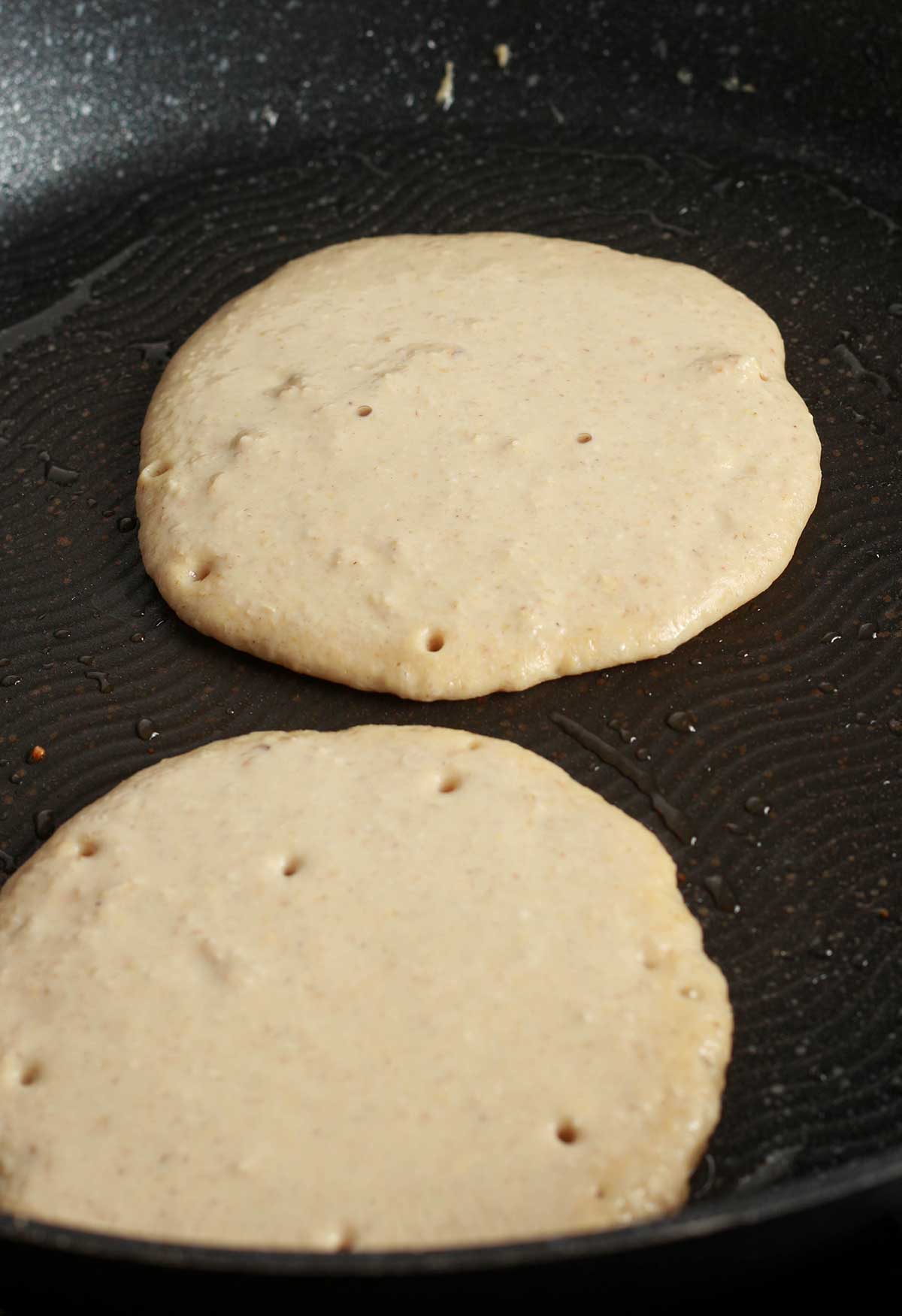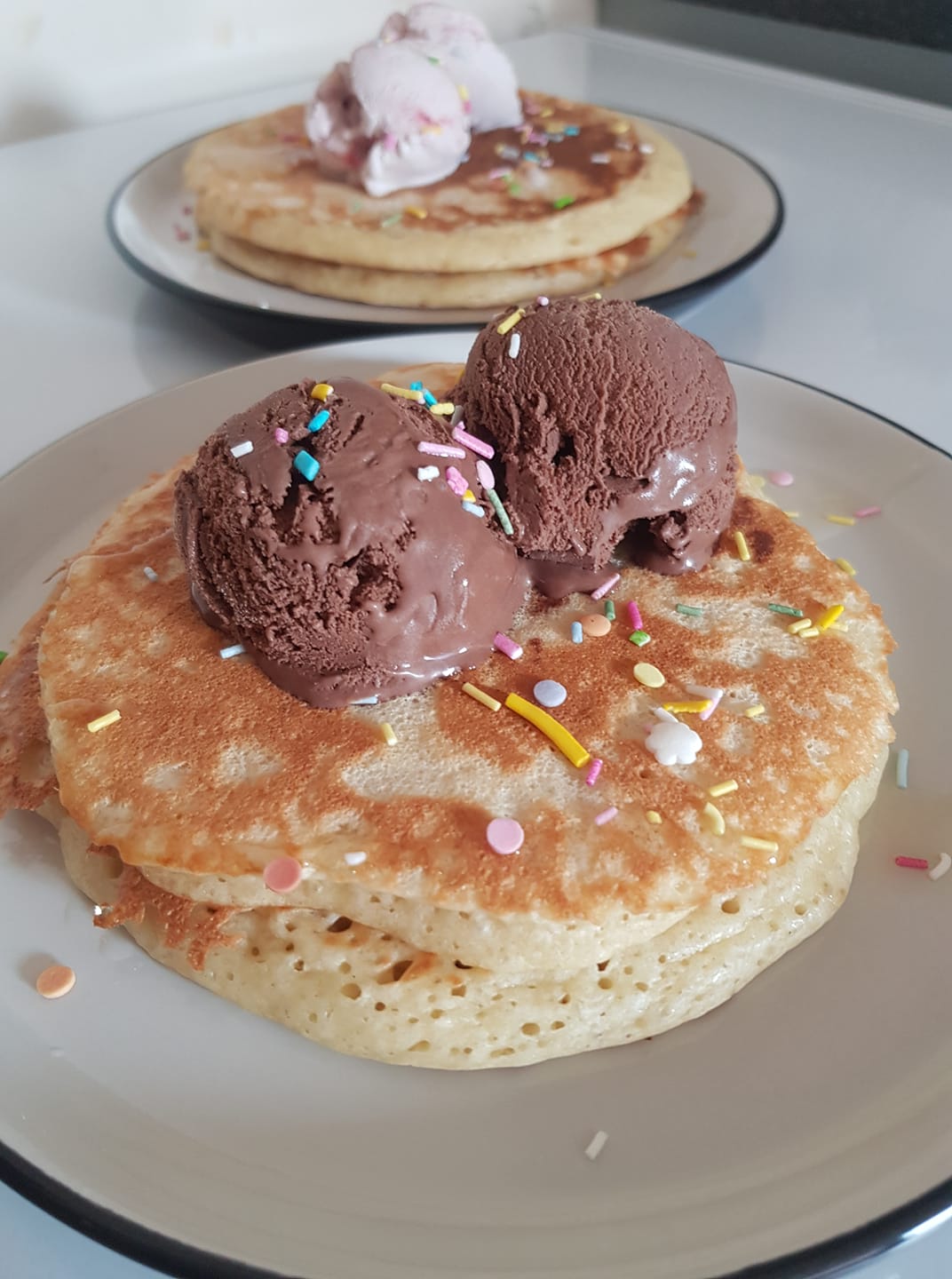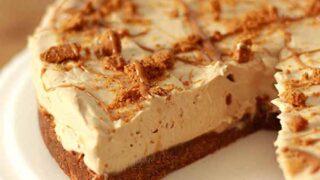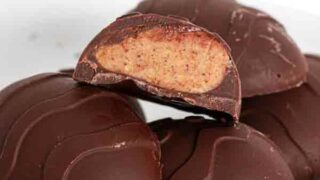Can You Use Self-Raising Flour For Pancakes?
Wondering if you can use self-raising flour for pancakes? This post will help! It explains everything you need to know in details, plus a quick and easy pancake recipe!

A common question I see asked online is whether or not you can use self-raising flour for pancakes. How much of a difference will it make to the end result, and are there any other adjustments that you need to make? I’ve written this post to share everything I know about the matter and I hope it helps!
What’s the difference between self-raising and plain flour?
The main difference between the two types of flour is that self-raising has raising agents to it (hence the name), whilst plain flour, also known as all-purpose flour, does not.
You’ll see some pancake recipes call for plain flour plus baking powder and/or bicarbonate of soda, and others simply call for self-raising flour. Self-raising flour is a quicker and easier way to make your baked goods nice and fluffy!
Self-raising flour is more commonly found in the UK, while the US tends to prefer plain/all-purpose flour. Another name used for it is self-rising flour. You can learn more in my post all about flour!
Can you use self-raising flour for pancakes?
Is it OK to use self-raising flour in pancakes then? Yes, you sure can! For the thick, fluffy, American-style pancakes, self-raising flour is the best one to use.
As mentioned above, this saves the need to add any extra baking powder or bicarbonate of soda, although you can add extra if you wish. Because the pancakes I make are vegan and don’t use eggs, I like to add a little extra baking powder along with my self-raising flour.
For English-style pancakes, plain flour is best to use because they don’t need to be fluffy. This style of pancake is super thin and flat so we don’t need to use any raising agents to make them.
How to make your own self-raising flour
If you can’t find self-raising flour in the supermarket, you can always have a go at making your own. It’s super easy!
All you need to do is add 2 teaspoons of baking powder and a small pinch of salt per 125g (1 cup) of plain flour. If you’d like to make a large batch, just multiply the quantities accordingly.
Once you’ve made your self-raising flour, you can use it as instructed in your pancake recipe.
How to make pancakes with self raising flour
This is a super quick overview on making pancakes with self-raising flour. If you’d like more detail, head over to my step-by-step pancakes recipe post.
Ingredients:
- 150g Self-raising flour
- 2 Tablespoons Caster sugar
- 1 Teaspoon Baking powder
- 300ml Buttermilk
- Oil or butter for frying
Method:
- Mix the self-raising flour, sugar and baking powder together.
- Add the buttermilk to the bowl and stir everything together briefly, to create a lumpy batter.
- Leave the pancake batter to sit at room temperature for 5 minutes to thicken.
- Fry the pancakes and flip when bubbles start to form on the surface.

Do you cook pancakes on high or low heat?
Personally, I’ve found the best pancake-cooking temperature to be somewhere between low and medium. The pan needs to be hot enough to fry the batter but not so hot that it’ll burn or stick to the pan. If the heat is too low, the pancakes will take forever to cook and if it’s too high, you’ll end up with burnt pancakes. Medium-low takes a bit longer but it will give you the fluffiest, golden brown pancakes.
Top tips for making pancakes
- Use fresh flour. If it’s been a while since you opened your self-raising flour, the raising agents may not work as well. It’s best to use a fresh or recently opened bag when possible.
- Make sure to use an acid in the recipe. We need an acid to react with the raising agents to help the pancakes rise. Typically this would be eggs but for vegan recipes you can use vegan buttermilk which is a mixture of soy milk and apple cider vinegar.
- The batter should be lumpy. Do not try to keep mixing to make the batter smooth. The lumps are what will help to create air pockets when frying, resulting in fluffy pancakes.
- Use an appropriate pan. A flat, non-stick pancake pan will give the best results.
More pancake recipes

Summary
So, can you use self-raising flour for pancakes? Yes, self-raising flour is preferred if you like your pancakes tall and fluffy. It’s an easy alternative to using plain flour and raising agents separately. Fry your pancakes on a medium-low heat and flip them over when bubbles begin to form on the surface.



